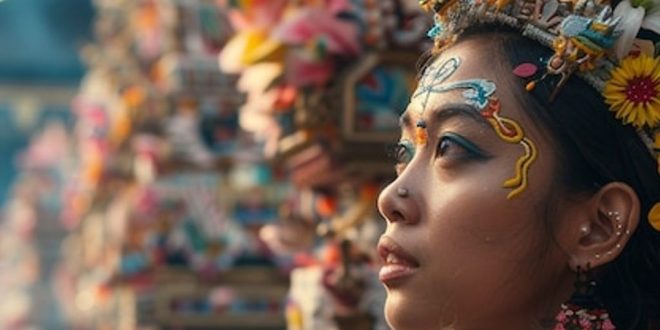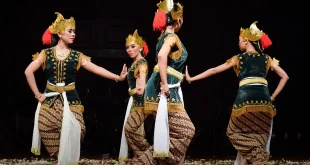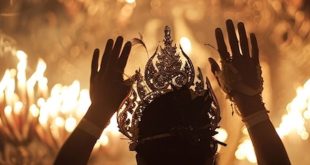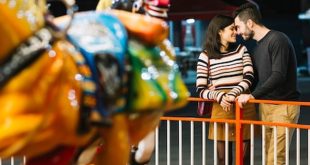Introduction to Bali Arts Festival
The Bali Arts Festival is a vibrant celebration of Balinese culture and arts, attracting culture enthusiasts and tourists from around the world. This annual event provides a unique opportunity to immerse oneself in the rich traditions of Bali, experiencing everything from traditional dance to intricate Balinese art.
Overview of the Festival
The Bali Arts Festival is one of Indonesia’s most renowned cultural events, held annually in Denpasar, Bali. This month-long festival typically takes place in June to July, showcasing the island’s vast array of cultural performances. The festival features a dynamic program that includes traditional dance, music, theater, and art exhibitions. Visitors can witness captivating performances such as the Kecak dance, Barong dance, and Legong dance, all of which are integral to Balinese traditions.
In addition to the performances, the Bali Arts Festival is a platform for local artisans to display their crafts, providing a window into the world of Balinese art. This includes everything from intricate wood carvings to exquisite textiles. Attendees can also indulge in the flavors of Balinese cuisine, with stalls offering a taste of local street food. For those interested in exploring more of Bali’s culinary delights, consider checking out the Bali Street Food Culture.
The festival is not just a celebration of traditional arts but also a venue for contemporary expressions, allowing both local and international artists to showcase their talents. This blend of old and new ensures that the Bali Arts Festival remains relevant and continually engaging.
Historical Background
The Bali Arts Festival was first initiated in 1979 by the then Governor of Bali, Ida Bagus Mantra. The objective was to preserve and promote the rich cultural heritage of Bali amidst the rapid modernization and tourism development on the island. Since its inception, the festival has played a crucial role in sustaining Balinese traditions and providing a platform for cultural exchange.
Historically, the festival was designed to bring together different communities from across Bali’s regencies, promoting unity through shared cultural heritage. It serves as a reminder of the island’s artistic lineage and the importance of cultural preservation in the face of globalization. The festival’s enduring success is attributed to its ability to adapt and incorporate contemporary elements while staying true to its roots.
For culture enthusiasts planning to visit the Bali Arts Festival, it is recommended to book accommodations in advance, given the influx of visitors during this period. Opting for eco-friendly hotels can enhance the cultural experience while supporting sustainable tourism practices. For options, visit Top Eco-Friendly Hotels in Bali.
For more detailed information about the festival and other cultural events in Indonesia, the Bali Government Tourism Office and Cultural Festivals in Indonesia are excellent resources to explore.
By attending the Bali Arts Festival, tourists and culture enthusiasts can gain a deeper appreciation for Balinese traditions and the island’s artistic heritage, making it a must-visit event for anyone interested in Indonesian festivals.
Celebration of Balinese Culture
The Bali Arts Festival is a vibrant celebration that offers a window into the rich tapestry of Balinese traditions and cultural performances. For culture enthusiasts and tourists interested in Indonesian festivals, this event is an opportunity to explore Balinese art and traditional dance, providing a deep dive into the island’s unique cultural heritage.
Traditional Dances and Performances
The Bali Arts Festival is renowned for its traditional dances and performances, which are integral to the island’s cultural identity. These performances are not just entertainment; they are a living embodiment of Balinese spiritual and community life.
Key Performances:
- Barong Dance: A symbolic struggle between good and evil, this dance is a staple of Balinese cultural performances. The Barong, a lion-like creature, represents good spirits, while its adversary, Rangda, symbolizes evil.
- Legong Dance: Known for its intricate finger movements and expressive gestures, Legong is a classical dance performed by prepubescent girls, often depicting stories from ancient epics.
- Kecak Dance: Unique for its use of a large group of male performers chanting in rhythmic harmony, this dance reenacts the battle from the Ramayana epic, where Prince Rama fights the evil King Ravana.
Practical Tips:
- Timing: The festival typically runs from mid-June to mid-July. To experience the full range of performances, plan your visit during this period.
- Venues: While the main venue is the Taman Werdhi Budaya Art Center in Denpasar, performances are often held in various locations across Bali. Check the Bali Government Tourism Office for detailed schedules.
- Cultural Etiquette: Dress modestly and be respectful during performances. Photography might be restricted, so always seek permission first.
Art Exhibitions and Workshops
In addition to traditional dances, the Bali Arts Festival features art exhibitions and workshops that highlight Balinese art. These events provide a hands-on understanding of the island’s creative expressions.
Highlights:
- Art Exhibitions: Showcasing a range of Balinese art, from traditional paintings to contemporary installations, these exhibitions often feature works by both established and emerging artists.
- Workshops: Participate in workshops to learn about traditional crafts such as batik, woodcarving, and silverwork. These sessions are led by local artisans keen to share their skills and knowledge.
Practical Tips:
- Workshop Selection: Choose workshops based on your interests. Whether it’s learning a new craft or understanding the philosophy behind Balinese art, there’s something for everyone.
- Art Purchases: Buying art directly from local artists supports the community. Ensure authenticity by inquiring about the artwork’s background and the artist’s story.
- Culinary Exploration: Combine your cultural experience with a taste of local cuisine. For a guide to traditional eats, visit Bali Street Food Culture.
For those planning a visit, it’s advisable to stay at accommodations that reflect Bali’s commitment to sustainability. Consider exploring Top Eco-Friendly Hotels in Bali for a responsible and immersive experience.
The Bali Arts Festival is not just an event; it’s a celebration of life, art, and tradition. By participating, visitors can gain a profound appreciation for Balinese culture and contribute to the preservation of its rich heritage. For more information on other similar events, the Cultural Festivals in Indonesia page offers an extensive list of cultural experiences across the archipelago.
Main Attractions and Events
Highlight Performances
The Bali Arts Festival is a vibrant celebration that showcases the rich tapestry of Balinese traditions and cultural performances. Held annually in Denpasar, this festival is a must-visit for culture enthusiasts and tourists eager to delve into Balinese culture. The festival typically spans a month, offering a plethora of performances that highlight the island’s unique artistic heritage.
One of the main attractions of the Bali Arts Festival is the traditional dance performances. These dances, such as the Legong and Barong, are deeply rooted in Balinese art and are characterized by intricate movements and vibrant costumes. These performances are a visual feast, providing a glimpse into the island’s spiritual and cultural life. The festival also features gamelan orchestras, which accompany many of the performances, enriching the experience with their melodic sounds.
Visitors can also witness contemporary performances that blend traditional elements with modern artistic expressions. This fusion not only entertains but also keeps the art forms relevant and evolving. For more information on the festival’s schedule and events, you can visit the Bali Government Tourism Office.
Culinary Experiences
In addition to its captivating performances, the Bali Arts Festival offers an array of culinary experiences that allow visitors to explore the island’s rich food culture. Balinese cuisine is renowned for its bold flavors, fresh ingredients, and use of aromatic spices. During the festival, food stalls line the event venues, offering traditional dishes such as Babi Guling (suckling pig), Satay Lilit, and Lawar.
These culinary delights provide festival-goers with a taste of authentic Indonesian festivals, where food plays a central role in celebrations. Engaging with local vendors and chefs offers an immersive experience into Balinese traditions and culinary practices. For those interested in more informal dining experiences, exploring the Bali Street Food Culture can be a rewarding adventure.
To fully enjoy the festival, it is advisable to plan your visit around key events and performances. Arrive early to secure good seating at popular performances, and take the opportunity to interact with local artists and performers to gain deeper insights into their crafts. For eco-conscious travelers, Top Eco-Friendly Hotels in Bali provide sustainable accommodation options.
The Bali Arts Festival is not only a celebration but also a platform for cultural exchange, offering an enriching experience for all who attend. By exploring the festival’s performances and culinary offerings, visitors can gain a profound appreciation of Balinese culture and its vibrant artistic expressions. For more on cultural festivals across Indonesia, check the Cultural Festivals in Indonesia.
Tips for Tourists
Visiting the Bali Arts Festival can be a fulfilling experience for culture enthusiasts and tourists eager to explore Balinese traditions. This guide offers insights into the best time to visit and how to get involved, with a focus on the Bali Arts Festival, Balinese culture, and planning a visit to this vibrant cultural event.
Best time to visit
The Bali Arts Festival typically takes place annually from mid-June to mid-July, making it an ideal time for tourists to immerse themselves in Balinese culture. During this period, the island comes alive with a range of cultural performances, traditional dance, and exhibitions of Balinese art. This timing also coincides with the dry season in Bali, providing pleasant weather for outdoor events and exploration.
Visitors are encouraged to plan their trips early, as the festival attracts a significant number of tourists and accommodations can fill up quickly. For an eco-friendly stay, consider Top Eco-Friendly Hotels in Bali, which offer sustainable lodging options that align with the island’s commitment to environmental preservation.
Practical Tips:
- Book Accommodations in Advance: Given the popularity of the festival, early booking is recommended to secure preferred accommodations.
- Prepare for Crowds: The festival is a major attraction, so expect bustling streets and venues.
- Weather Considerations: Pack light clothing suitable for warm weather, along with sun protection.
How to get involved
Engaging in the Bali Arts Festival offers a unique opportunity to partake in the rich tapestry of Balinese traditions and cultural performances. Visitors can enjoy myriad activities, from watching traditional dance and gamelan music performances to exploring art exhibitions showcasing the talents of local artisans.
To truly immerse oneself in Balinese culture, consider participating in workshops or guided tours that provide deeper insights into the island’s artistic heritage. Additionally, exploring Bali Street Food Culture can enhance your cultural experience by introducing you to local culinary delights.
Practical Tips:
- Attend Cultural Performances: Check the event schedule to catch performances by local and international artists, highlighting the diversity of Balinese art.
- Join Workshops: Participate in workshops to learn about traditional crafts or dance, offering a hands-on cultural experience.
- Explore More: Extend your cultural journey by visiting nearby attractions and lesser-known sites recommended by the Bali Government Tourism Office.
For further information on cultural festivals across Indonesia, visit the Cultural Festivals in Indonesia website to explore other exciting events throughout the country.
By planning your visit around the Bali Arts Festival and engaging in its offerings, you can gain a deeper appreciation for the island’s artistic heritage and vibrant culture.
Conclusion
The Importance of Preserving Balinese Culture
Preserving Balinese culture is crucial not only for maintaining the island’s unique identity but also for supporting the local economy through tourism. Balinese traditions, deeply rooted in spirituality and community, offer a window into a way of life that is both rich and diverse. The Bali Arts Festival serves as a vital platform for showcasing Balinese art, traditional dance, and other cultural performances, ensuring that these traditions are passed down to future generations.
Engaging with Balinese culture through events like the Bali Arts Festival allows tourists and culture enthusiasts to gain a deeper appreciation of the island’s heritage. Participating in these events can also encourage a sense of responsibility towards preserving this culture. From exploring traditional crafts to understanding the significance of Balinese rituals, visitors can contribute to the sustainability of the cultural landscape by respecting local customs and supporting authentic Balinese experiences.
To further explore Balinese culture, visitors can check out resources like the Bali Government Tourism Office for more information on cultural preservation efforts. Additionally, staying at Top Eco-Friendly Hotels in Bali can enhance the experience by supporting environmentally conscious practices that align with cultural sustainability.
Festival Impact on Tourism
The impact of festivals like the Bali Arts Festival on tourism is significant, drawing thousands of visitors from around the world. Such events not only boost the local economy but also raise awareness about Indonesian festivals and the rich tapestry of Balinese traditions. By highlighting cultural performances and traditional dance, the festival plays a pivotal role in attracting tourists who are eager to experience Balinese art in its most authentic forms.
For culture enthusiasts planning to visit the Bali Arts Festival, understanding its role in tourism can enhance their experience. Festivals provide a unique opportunity to witness the convergence of traditional and contemporary Balinese art forms, offering a comprehensive view of the island’s cultural evolution. Engaging with local communities during these festivals can lead to meaningful exchanges, making the visit more enriching and memorable.
To make the most of your visit, consider exploring the Cultural Festivals in Indonesia to plan a trip around other events that showcase Indonesia’s diverse cultural heritage. Additionally, diving into the Bali Street Food Culture can complement your festival experience by offering a taste of local flavors and culinary traditions.
In conclusion, the Bali Arts Festival is not just an event but an essential celebration of Balinese culture, offering a profound impact on tourism while fostering cultural appreciation and preservation. By participating in such festivals, tourists can support the ongoing efforts to preserve and promote Balinese culture, ensuring it continues to thrive for generations to come.
FAQ
What is the Bali Arts Festival?
The Bali Arts Festival is an annual cultural event held in Denpasar, Bali, typically from mid-June to mid-July. This festival is a vibrant showcase of Balinese culture, featuring traditional dance, music, and art performances. First launched in 1979, it aims to preserve and promote Balinese cultural heritage, providing a platform for artists and performers to express and celebrate their traditional arts.
How does the festival celebrate Balinese culture?
The Bali Arts Festival celebrates Balinese culture by highlighting its rich traditions through various art forms. Attendees can experience an array of performances, such as traditional Balinese dances like Legong and Barong, gamelan music, and wayang kulit (shadow puppetry). Additionally, the festival includes art exhibitions showcasing traditional Balinese paintings and crafts, as well as culinary events where visitors can taste authentic Balinese cuisine. This celebration not only preserves historical practices but also encourages cultural exchange and innovation, fostering a deeper understanding of Balinese heritage.
What are the main attractions and events?
The main attractions of the Bali Arts Festival include the grand opening parade, where various cultural groups from across Bali parade in vibrant costumes, showcasing their unique traditions. Throughout the festival, visitors can attend numerous performances of traditional and contemporary Balinese dance and music. Other key events include art exhibitions, craft workshops, and culinary showcases. The festival often features competitions, such as traditional costume contests and dance competitions, which are open to both locals and tourists.
How can tourists participate in the festival?
Tourists can participate in the Bali Arts Festival by attending the various events and performances. Many events are open to the public, and some workshops may allow for hands-on participation, providing a unique opportunity to learn Balinese crafts or dance. To fully enjoy the festival, tourists should check the festival’s schedule, which is often available online or at local tourist information centers. Additionally, engaging with local guides or joining cultural tours can enhance the experience by providing deeper insights into the cultural significance of the events. It’s also a great opportunity for tourists to interact with local artists and performers, offering a more immersive cultural experience.
 Lokasiku Your reference for travel in Indonesia
Lokasiku Your reference for travel in Indonesia


